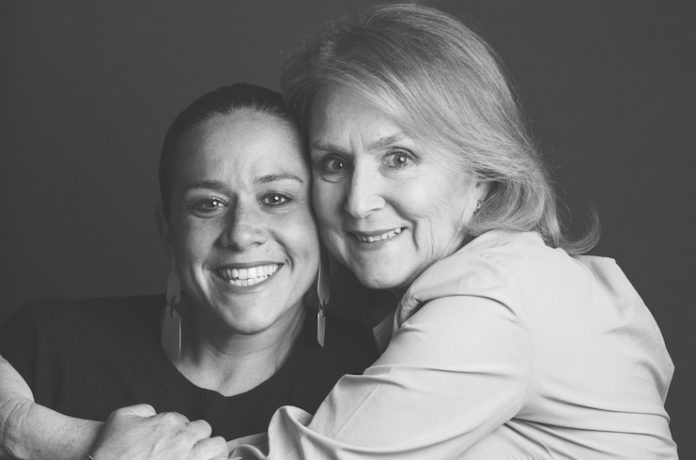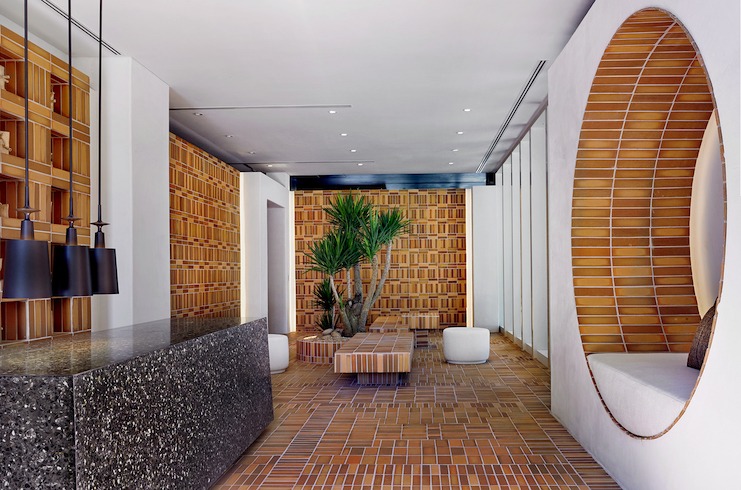
Fanny Haim was born in Colombia, immigrated to the United States, and has built a design legacy that is already lasting generations. Fanny Haim & Associates (FH&A), the design company Fanny founded more than two decades ago, now includes her daughter Michelle Haim. Working in design, Fanny became aware of the lack of diversity not only in their firm but throughout the industry in general. “The fact is, because we are Hispanic, a lot of the people who seek positions with us are what we call a poly-Hispanic mix. However, we’ve recently come to question why non-Hispanic people of color were not applying for jobs here,” she says.
The issues the Haims discussed with LODGING included their thoughts on that reality within the context of the perception of design as a luxury experienced only by the privileged—a perception they are trying to change in favor of one that focuses on quality of life and inclusivity. They also described their own design philosophy, how they work together and with clients, and their use of sustainable materials that convey a truly legitimate sense of place.
Defining their overarching approach to design, Fanny says, “The culture or philosophy that guides our design is based on three principles: creativity, innovation, and timelessness.”
She acknowledges that creativity is a given among designers, but says, “Being deeply creative goes far beyond inspiration. It must be constantly refueled with work, effort, and research. We are always trying to expand our horizons and be receptive and very keen observers of the world in order to stay fresh and current.” She notes what she calls “a kind of third eye” among creative people that enables them to view the world in both a micro and macro way. “We look at the details and the small things, then rise above to see the overall picture,” she explains.
On innovation at FH&A, she says, “We are always trying to find ways to innovate, not just in what we do, but how we do it.” Yet, as a larger concept, she considers innovation to be “about the kind of imprint we are leaving on the world, and how we will someday look back on what we’ve done.” In this category now, she says, is what she calls “conscious luxury.”
As far as timelessness goes, she says, “It has always been a benchmark for us to create spaces that remain relevant with the passage of time.” How they do this, she says, is by avoiding trends, such as “in” colors that date projects. “We strive to create the kind of designs that pass through time seamlessly.”
Fanny says the pandemic acted to crystallize the concept of conscious luxury mentioned above, which she says is related to the future of the industry, changing the direction of design away from lifestyle—e.g., using the most expensive materials—toward quality of life. “Instead of fancy materials suggestive of luxury living, we can talk about using space, light, fresh air, and connection to nature.”
Michelle, who is FH&A’s creative director, describes the Earth Lounge they created for a 2019 design competition whose theme was sustainability. “The idea was to create a kind of sacred public space that honors our past and humanity using materiality.” With sustainability and tradition in mind, she chose terracotta tiles made from the earth, which could be reused after the exhibition was dismantled. Her design was based on the outdoor plazas where people have gathered for generations in many parts of the world. “We called it Earth Lounge, because a lounge is a place where people come together. But we used a very sustainable material that also happened to be made by a company that prides itself on their green process,” she says.

A current trend the Haims can get behind is that of creating “a sense of place,” something touted these days as a selling point, especially at boutique hotels. Yet, Fanny says, creating a sense of place using sustainable materials from the surrounding environment should not be regarded as a passing fad. “Evoking a sense of place by using materials that are local is paramount to the design of a space, but it should always be done with sustainability in mind, so we need to take care that these materials are not endangered.”
Also on the topic of sustainability within FH&A and beyond, Fanny says, a relic of the pandemic was the discovery that their company could minimize its carbon footprint by working in smaller spaces and only when the occasion warrants. “We can be more efficient and nimble working remotely and just using our office for sporadic meetings,” she maintains.
Reflected on the past, Fanny, who has three daughters, recalls that even as a child, it was clear that Michelle had a keen eye for design details, something likely honed by her voracious consumption of design books and magazines. She was therefore thrilled when Michelle joined the company—what both describe as “a dream come true.”
Although Fanny is generally the first to meet with clients to discuss broad concepts, which she calls “the personality of the space” and that her daughter calls “my mother’s genius ideas,” both agree it is a true collaboration. Michelle’s “picky” attention to detail is much appreciated, but Fanny sees her daughter most of all as a true visionary. “As a creative director, she looks at the project, we talk about it, and she’s the one who best crystallizes the conceptual part, using visual tools to show the client. She creates a mood, inspiration, presentation like nobody I know. She also raises my game. I call her my secret weapon, because she quietly and very graciously inspires me and fuels me and makes me be more creative in ways that she doesn’t even realize. She also brings the freshness and the out-of-the-box thinking that somebody from my generation can lose. So, even though I do more of the talking in client meetings, she’s the real influencer.”
Although as a student at Parsons School of Design, Michelle had been on the fence in the choice between interior and furniture design, she now says she has no regrets about the path she chose. “I’m incredibly grateful. And I also feel like it was a smart move for me. I’m very lucky to have these opportunities and to have my mother as my beacon and my biggest inspiration lead me along the path I’ve chosen. It’s given me an amazing well-rounded education on how to be a designer, how to try to make something happen, how to have an idea and take it from A to Z. I’m not just grateful — I’m excited. My engines are revved.”
Circling back to consider why gaps in diversity exist in her industry and at their firm, Fanny observes that social justice movements, including Black Lives Matter, opened her eyes to a reality that in part explains the dearth of design students and job applicants. “BIPOC (Black, Indigenous, and people of color) children and those from disadvantaged backgrounds may not be exposed to designers in their day-to-day lives, and therefore may not aspire to this field because they don’t have it as reference.”
To help rectify this, she says, FH&A is now planning to create a pop-up workshop in design to bring to the public-school system. “It’s become clear that we all need to locate and attract to our field a broader base of people from all backgrounds,” she says.











